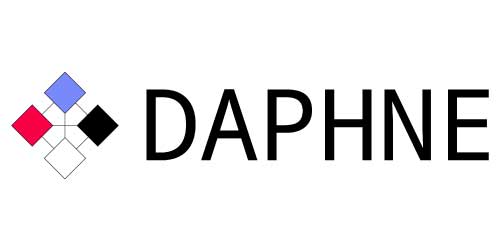Modern data-driven applications leverage large, heterogeneous data collections to find interesting patterns, and build robust machine learning (ML) models for accurate predictions. Large data sizes and advanced analytics spurred the development and adoption of data-parallel computation frameworks like Apache Spark or Flink as well as distributed ML systems like MLlib, TensorFlow, or PyTorch. A key observation is that these new systems share many techniques with traditional high-performance computing (HPC), and the architecture of underlying HW clusters converges. Yet, the programming paradigms, cluster resource management, as well as data formats and representations differ substantially across data management, HPC, and ML software stacks. There is a trend though, toward complex data analysis pipelines that combine these different systems. Examples are workflows of distributed data pre-processing, tuned HPC libraries, and dedicated ML systems, but also HPC applications that leverage ML models for more cost-effective simulation. Major obstacles are (1) limited development productivity for integrated analysis pipelines due to different programming models, and separated cluster environments, (2) unnecessary data movement overhead and underutilization due to separate, statically provisioned clusters, and (3) lack of a common system infrastructure with good interoperability. For these reasons, DAPHNE’s overall objective is the definition of an open and extensible systems infrastructure for integrated data analysis pipelines. We aim at building a reference implementation of language abstractions (i.e. APIs and a domain-specific language), an intermediate representation, as well as compilation and runtime techniques with support for integrating and scheduling heterogeneous accelerator and storage devices. A variety of real-world, high-impact use cases, datasets, and a new benchmark will be used for qualitative and quantitative analysis compared to state-of-the-art.
DAPHNE
Integrated Data Analysis Pipelines for Large-Scale Data Management, HPC, and Machine Learning

PROJECT’S CONTACT:
Contact email: info@know-center.atCall:
ICT-51-2020
Coordinating Organization:
Know Center, Austria
Project Timespan
2020-12-01 – 2024-11-30
Other Partners:
- AVL LIST GmbH, Austria
- DLR – Deutsches Zentrum für Luft- und Raumfahrt EV, Germany
- ETHZ – Eidgenössische Technische Hochschule Zürich, Switzerland
- Hasso-Plattner-Institut for Digital Engineering, Germany
- ICCS – Institute of Communication and Computer Systems, Greece
- Infineon Technologies AG, Austria
- Intel Technology, Poland
- IT Universitetet I Kobenhavn, Denmark
- KAI – Kompetenzzentrum Automobil- und Industrieelektronik, Austria
- Technische Universität Dresden, Germany
- University of Maribor, Slovenia
- Universität Basel, Switzerland
- Technische Universität Berlin, Germany



